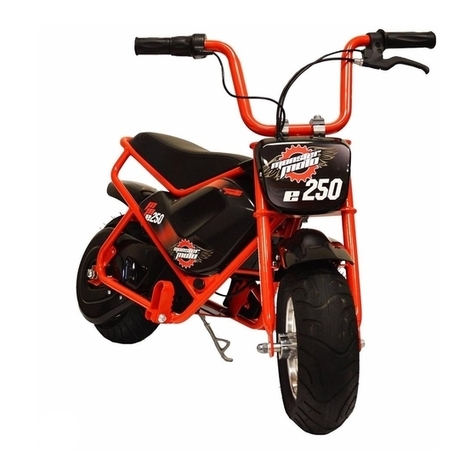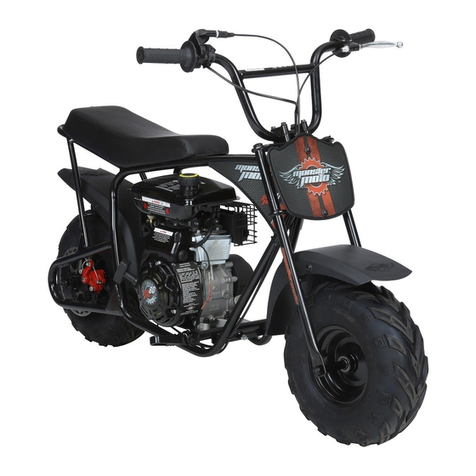Warranty
Warranty Information
Congratulations on your decision to purchase a Monster Moto Power Sports product! We are
gratified that you have chosen a Monster Moto product, and we are dedicated to supporting your
successful and safe power sports recreation experience!
In order to assure your quality experience, please review and make note of the following warranty
related issues:
KEEP YOUR RECEIPT: Proof of purchase will be required to substantiate any warranty claim.
WHAT IS COVERED: Monster Moto warrants to the original retail purchaser of this Product that this
Product is free from defects in material or workmanship and agrees, at Monster Moto’s discretion,
to either repair, provide replacement parts for, or replace (without charge or labor) any product
component having a material defect for a period of ninety (90) days from the date of purchase,
except as limited below. Monster Moto may require the purchaser to return to Monster Moto, at
their expense, the part claimed to be defective for Monster Moto’s inspection, at which time the
returned parts or product become property of Monster Moto. This product is also covered by an
Emissions Control System Warranty which is separate from and in addition to this warranty.
WHAT IS NOT COVERED: This warranty does not cover any conditions caused by misuse, neglect,
negligence, accident or operation in any way contrary to the operating instructions located in the
operator’s manual. Normal wear, alteration, modification, improper or inadequate maintenance, or
use of unauthorized replacement parts or service provided by anyone other than an Authorized
Monster Moto Service Center are not covered under this warranty. This warranty does not cover
products used for rental or commercial purposes or used in competition, nor does it cover
transportation costs for warranty service. Without limiting the above, this warranty is VOID with
respect to any product that has sustained damage resulting from impacts, accidents, jumping, or
any other uses considered outside of the scope of normal and safe operation.
LIMITATIONS OF LIABILITY: This Warranty is non-transferable after the Product’s initial sale. No
unapproved modifications can be made to the Product, its performance or otherwise, in order for
this Limited Warranty to remain in effect. No reimbursement is provided for towing, loss of time,
loss of use, inconvenience, incidental or consequential damages. This Limited Warranty covers only
parts and labor due to manufacturer defect. This Warranty does not cover minor surface blemishes,
rips, tears, or other cosmetic damages due to normal use, or other intentional or unintentional
damage to Product. This Limited Warranty will not cover any damage which results from the
application of improper cleaners, solvents or chemicals to the Product, or from smoke or soot, or
from exposure to saltwater, sea breeze or salt. This Limited Warranty will not cover any damage
resulting from product storage in the elements. This Limited Warranty does not cover improper
repair or misdiagnosis of problem.
OWNER'S RESPONSIBILITIES
As the vehicle owner, you are responsible for performing required maintenance and maintaining a
record and all receipts for maintenance performed on your. You may not be denied a warranty
claim solely because of your failure to ensure the performance of all scheduled maintenance or lack
of maintenance records or receipts. As the vehicle owner, you may be denied your warranty
coverage if your vehicle or a part has failed due to abuse, neglect, improper maintenance, or
unapproved modifications.
855-833-6483
OR EMAIL US AT






























